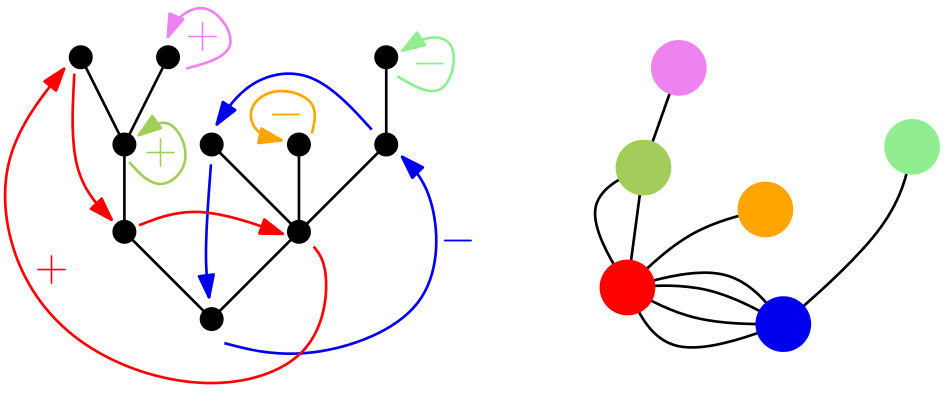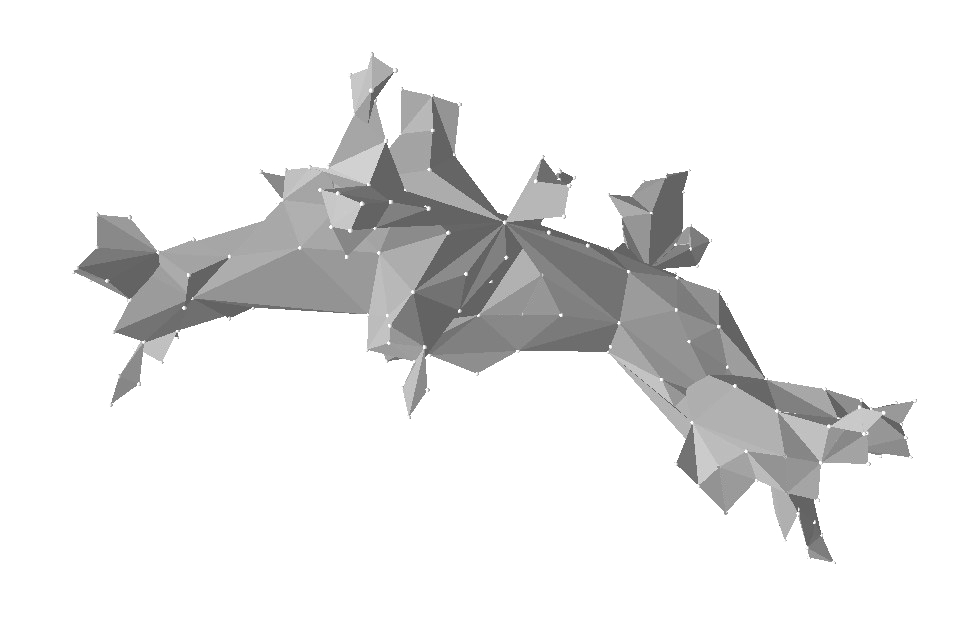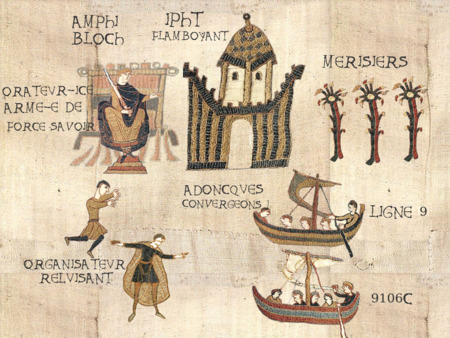Journée Cartes du 31 mai 2018
Lieu : Institut de Physique Théorique (situation et accès)
Oratrice, orateurs : Thordur Jonsson, Guillaume Chapuy, Enrica Duchi, François David, Mathias Lepoutre
Organisateurs : Séverin Charbonnier, François David, Bertrand Eynard
Soutien : IPhT
Inscription (pour les repas) : https://doodle.com/poll/g6dy63fet9yzbe6d
Programme
- 9h30-10h00: café d'accueil
- 10h00-10h45: Thordur Jonsson, The structure of spatial slices of 3-dimensional causal triangulations
- 10h45-11h30 : Guillaume Chapuy, Énumération de variétés triangulées en dimension d>=3
- 11h30-11h45 : pause
- 11h45-12h30 : Enrica Duchi, Fighting fish: enumerative properties
- 12h30-13h45 : déjeuner
- 13h45-14h30 : François David, Random Delaunay triangulations, topological quantum gravity and deformations of isoradial lattices
- 14h30-14h45 : pause
- 14h45-15h30 : Mathias Lepoutre, A constructive proof of the rationality of maps in higher genus
Résumés
- Thordur Jonsson, The structure of spatial slices of 3-dimensional causal triangulations
We consider causal triangulations whose spatial slices have the topology of the disc or the sphere. We show that the slices of the triangulations are in one-to-one correspondence with a class of certain coloured two-dimensional cell complexes which satisfy simple conditions. - Guillaume Chapuy, Énumération de variétés triangulées en dimension d>=3
En dimension d>=3 on prend n simplexes, et on recolle leurs facettes de manière arbitraire. On obtient ainsi un espace topologique qui est a priori une pseudo-variété, mais pas toujours une variété. De combien de manières peut-on le faire, asymptotiquement, pour obtenir une variété? On donne des réponses (très) partielles à cette question sous la forme de bornes inférieures et supérieures superexponentielles. En particulier on détermine le comportement surexponentiel en dimension 3, dans le cas des triangulations coloriées issues des modèles de tenseur. Au passage on croise des questions rigolotes et nouvelles d'énumération de graphes que nous laissons partiellement ouvertes. Travail en commun avec Guillem Perarnau. - Enrica Duchi, Fighting fish: enumerative properties
Fighting fish are combinatorial structures made of square tiles that form two dimensional branching surfaces. A main feature of these fighting fish is that the area of uniform random fish of size n scales like n^5/4 as opposed to the typical n^3/2 area behavior of the staircase or direct convex polyominoes that they generalize. In this talk we concentrate on enumerative properties of fighting fish: in particular we show that the number of fighting fish with i left lower free edges and j right lower free edges is equal to
(2i+j−2)!(2j+i−2)!/i!j!(2i−1)!(2j−1)!.
These numbers are known to count rooted planar non-separable maps with i+1 vertices and j+1 faces, or two-stack-sortable permutations with respect to ascending and descending runs, or left ternary trees with respect to vertices with even and odd abscissa. - François David, Random Delaunay triangulations, topological quantum gravity and deformations of isoradial lattices
I present recent results on the model of random planar Delaunay triangulations.
Firstly, its relation with the Weil-Petersson measure on the moduli space of punctured Riemann surfaces is made explicit. This implies that it is in the same universality class of random maps and pure gravity (works with S. Charbonnier and B. Eynard).
Secondly, a program to study its conformal properties by formulating it as a deformation of planar isoradial lattices (definition of stress-energy tensor, central charge, relation with discrete analyticity) is introduced (work in progress with J. Scott). - Mathias Lepoutre, A constructive proof of the rationality of maps in higher genus
Bender and Canfield proved in 1991 that the generating series of maps of genus g is a rational function of the generating series of planar maps. In this talk, I will give the first bijective proof of this result. Our approach starts with the introduction of a canonical orientation that enables us to construct a bijection between 4-valent bicolorable maps and a family of unicellular blossoming maps.
Traces attestant que la localisation de l'IPhT était connue dès la tapisserie de Bayeux


